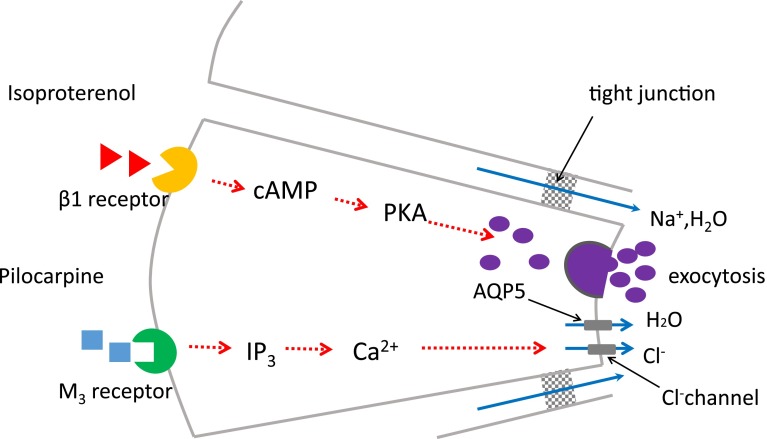Fig. 1.
Pharmacological effects of pilocarpine and isoproterenol on primary saliva secretion from salivary gland acinar cells. Pilocarpine stimulates M3 receptors, which induces a rise in the intracellular Ca2+ level thereby causing chiefly the activation of luminal Cl– channels. Cl– release mediates Na+ flow from the interstitium to the lumen, which consequently causes near-isosmolar water transfer through AQP5 and/or tight junctions. Isoproterenol activates β1-adrenergic receptors, causing chiefly the exocytosis of secretory granules containing salivary protein via the cAMP/PKA cascade.

